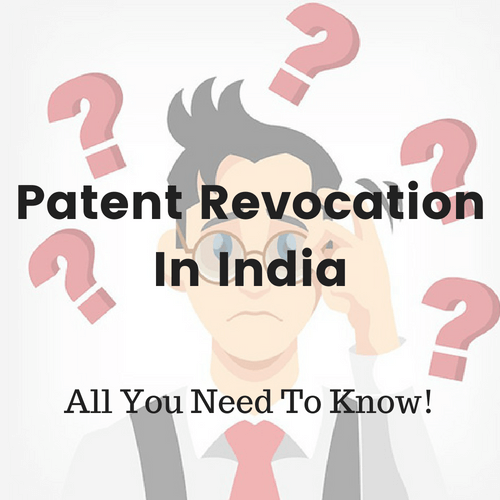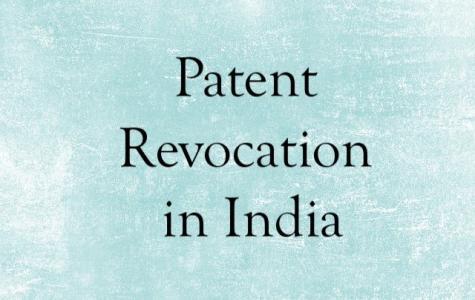Counter claim for revocation of Patent Registration in India
Counter claim for revocation
Counter claim for revocation is a nothing but mentions the commercial success of the product which is patented by the patentee. It is a secondary consideration in patent but it is an attending circumstance of a patent. Another reason which persuades me to infer to the contrary in the absence of the evidence is that there is a commercial success of the medicine worldwide which has been widely recognized and the same is proven to be successful medicine. This is clear from the depositions of PW 3 Nick Thatcher. It is true that the said commercial success per se is not determinative of the fact that there is a non-obviousness, but it at least somehow acts as an attending circumstance to show that there could have existed the purposeful research on the existing state of the art by the person who is skilled in the art, who has made certain experiments and by narrowing down the compounds resulting in a single compound which has been widely successful and efficacious. If the inventor is common to US 534 and US 498, that event itself show that the inventor is skilled in the art and is continuously working towards the making of anti-cancer drugs, but the same nowhere indicates that his selection may be random or arbitrary.
Various English decisions were referred to by both parties as discussed earlier in detail the jurisprudential difference existing in the tests adopted by the Courts in India with that of Courts in US. Thus, due to operation of the said doctrinal tests like motivation, suggestion and teaching and others existing in US which gives a kind of presumption of validity to the patent but similar position does not happen to the Indian jurisdiction where the patent is always vulnerable to challenge unless displaced by positive evidence. On the bare reading of the aforementioned Sections, it is clear that the definition of “inventive step” nowhere accords any differential treatment to any particular type of invention. Rather, it lays down the general test which is indicative towards technological advancement and the non-obviousness of an invention to a person skilled in art. Besides the same, the said definition of inventive step under section 2(ja) which has been newly inserted in the Patents Act (Amendment) 2005 once read with grounds of revocation under section 64 nowhere indicate any special treatment or different tests to be applied for any particular type of invention more specifically medicinal, chemical, industrial, etc. It is necessary to discuss the patent law as governing in India in form of Patents Act 1970 in order to find out the true test on basis of which the obviousness or inventive step in the patent is required to be tested.
On conjoint reading of the Section 64 read with Section 2(ja), it is clearly discernible that there are certain essential ingredients of Section 2(ja) in order to call any invention to qualify the threshold of inventive step of patent. The said ingredients are:-
a) That the said invention involves a technical advancement as compared to existing knowledge or economic significance or both; and
b) That makes the invention non obvious to the persons skilled in art. These are conjunctive requirements under section 2(ja) which means that not merely there should be a technical advancement in the invention but at the same time, it should not be obvious to the person skilled in art. Therefore, both the requirements are to be satisfied conjunctively. It is noteworthy here again that beyond the said two ingredients, there is no further ingredient which should be read into in order to enlarge or limit the scope of the Section.

Consequently, what follows from the above discussion is that as per the provision of Patents Act there is nothing which is indicative of the fact that any stricter approach is to be followed while testing the patents relating to chemical compounds due to any reason whatsoever including that the patent relates to chemical compounds which are preexisting in the field and therefore some departed approach unlike other kinds of patents may be followed in order to adjudicate upon the obviousness relating to chemical compounds or medicinal patent be it product or process. This is also emerging from amendments made in the year 2005 which speaks in the same voice with that of the view of Supreme Court while introducing the product and process patents for medicines. All this is indicative of the legislative intent that the legislature was conscious while providing the definition of inventive step that it is according patent protection to medicines, still no such other treatment either in the form of explanation or proviso to the definition of inventive step or anywhere has been provided. In absence of any such intent to provide such different tests of obviousness in pharmaceutical patents, it would be legally impermissible to import any such new tests which may somehow seem or appear to be facets of the tests of obviousness as Indian Act nowhere provides such requirement. I find that the said submissions cannot be believed in the abstract in the absence of the any positive evidence coming from the defendant’s end showing some tenability of the same clinically as to how the said invention could be arrived at on trial and error method or selection is arbitrary. This could have been done by the defendant by going step by step. Firstly to show the example from the known compound, which the defendant has done, secondly to show as to how the said selection is not far removed not merely by relying upon the structural similarity or generally saying that the ethynyl or methyl could reap the similar results but by clinically showing what is the effect of the said working of ethynyl at the several positions and how it is not far removed from EP 226 and lastly by showing that the entire selection is arbitrary. All this could have been done by the defendant in the affidavit by showing positive evidence. Failure on the part of the defendant to establish the bare minimum material facts would thus lead to inference as to non-obviousness. In the absence of the positive evidence from defendant to the effect that the selection of the range is arbitrary by non-application of mind which is crucial factor in discerning whether the said impugned patent is obvious or not, It cannot be assumed on a priori basis that the mere fact that there exist some similarities in the structure of ranges, the replacement of the third position with ethynyl may follow and thus the said patent is obvious based on trial and error method. I find that if the evidence to show the selection is arbitrary is not present on record and even it is established on the record that there is a sort of inspiration taken from EP’226, the existence of the said fact, by itself does not denote obviousness. This is due to the reason that it is seen in the deposition of the PW-3 Nick Thatcher and in the other pleadings also stating that there were certain defects in the medicine GEFTINIB and for the said reason the said medicine was not able to cure the patients properly and consequently was not recommended. Therefore, even if it is shown that the starting point of the invention is EP 226 and there are changes made in the chemical structures cited as example compounds in the said patent by reacting the same with ethynyl later on in relation to selected range, I do not find that such selection can be arbitrary, rather it can be inferred that there may be some further experimentation done in future on the Geftinib compounds which eventually narrowed down the examples cited by the defendant in its submissions, ultimately resulted into the claim No.1 of the patent. All this rather indicates towards purposeful selection rather than arbitrary one.
All other motivation submissions without prejudice ones, the submission relating to replacement of ethyl from methyl component, secondary consideration as to assuming obviousness. I may notice lastly that the finding arrived at as to non-establishment of obviousness is due to the lack of evidence and deposition in the present case wherein the defendant is not able to show by way of positive evidence three requirements as to material facts leading up to obviousness in the chemical compounds. If the chemical compounds are held to be obvious on the basis of mere perusal and appearance of the structures and assuming that the slight change here and there is inconsequential without a positive evidence medically and clinically as to how the said reaction is immaterial, then several novel compounds can be declared obvious by such exercise and the same shall affect the research process adversely. The innovation or invention in the sense of chemical compound is not merely to innovate a new set of the compound per se but also making improvements in the existing state of the art by taking the aid of the already existing compound and working upon the same by way of experimentation by way of the reactants. This is the reason why, the Court cannot simply be satisfied by mere reliance of similar structure in the previous art and thereafter assuming that slight substitutions are inconsequential. Therefore, the establishment of the material facts is essential, which is missing in the present case. Resultantly, no ground of obviousness or lack of inventive step under Section 64 (1) (f) of the Patents Act is made out due to the inability of the defendant to discharge the onus casted upon it.
For Patent Registration in Coimbatore -> Click here.
